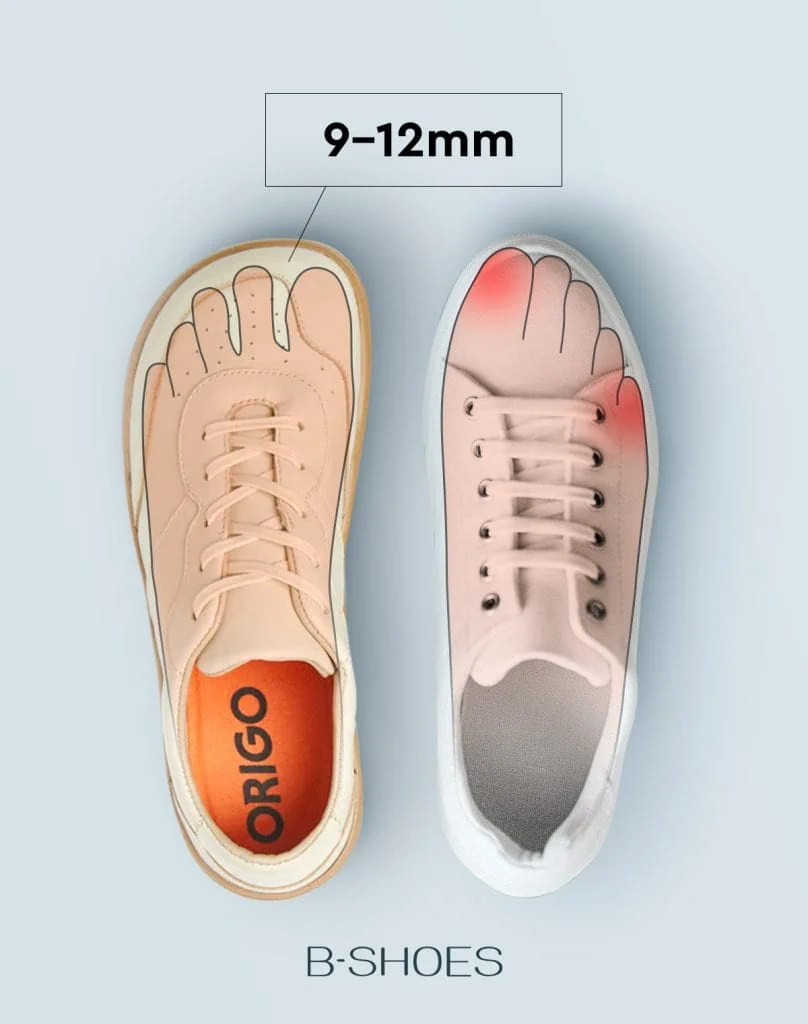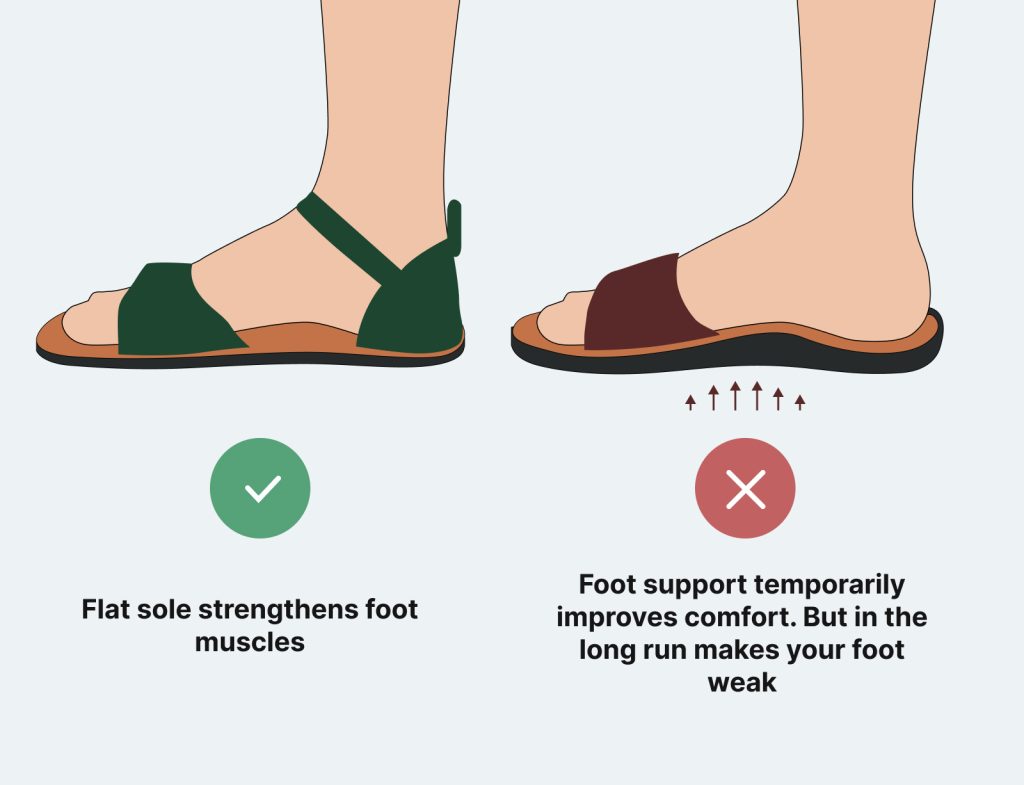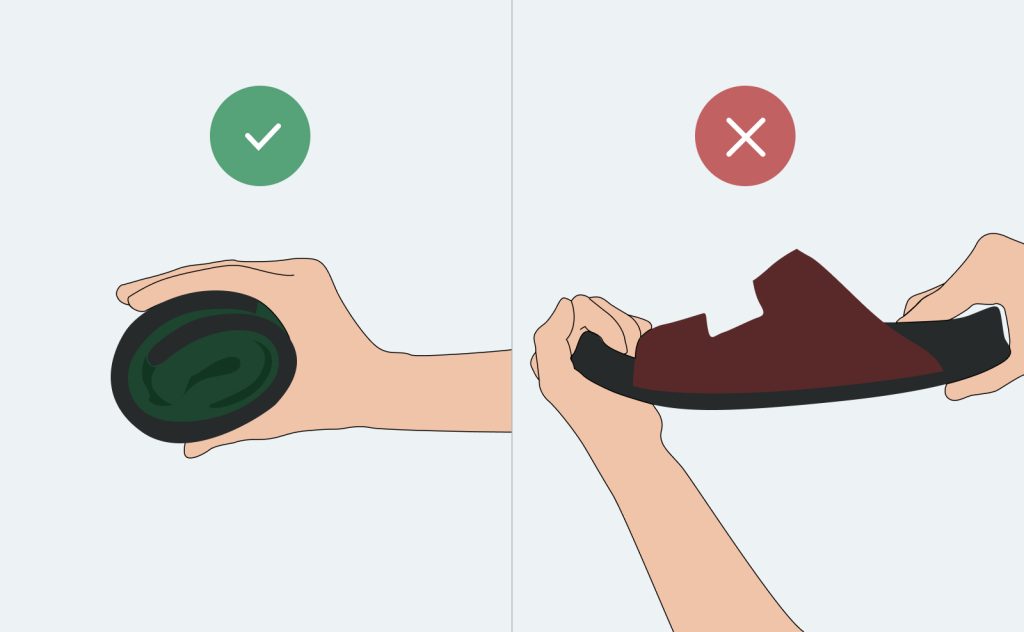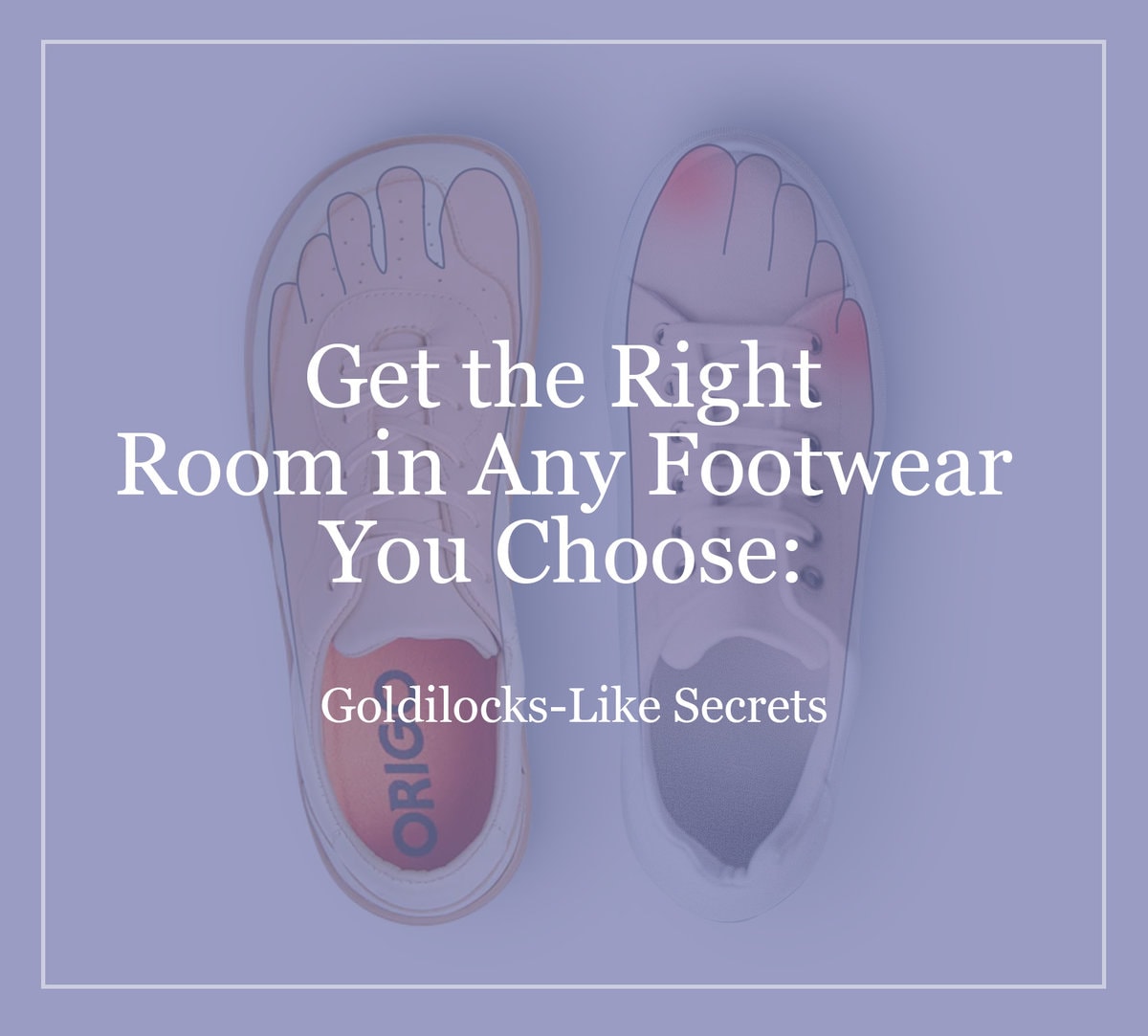In This Article
A poor fit isn’t just about shoes that slip off easily. It also includes footwear that’s too snug, with your toes pressing too closely against the end. If your shoes dig into your skin and cause noticeable discomfort, don’t just tolerate it. That’s a clear sign that you need a better fit. If you’re looking for guidance, here’s our ultimate guide on selecting comfortable shoes with adequate room for your feet. Move freely without the unwanted struggle!
How Much Room Should You Have in a Shoe?
In our experience, there’s no single ideal measurement for everyone; the best fit is personalized to individual needs. While factors like gender and age play a role, you’ll generally want 10 to 12 millimeters of space beyond your longest toe. For women, this is typically 8 to 9 millimeters, and for men, at least 11.5 millimeters.

Problems typically arise when people don’t take into account the target shoes’ peculiarities, possible between-the-sizes variations, etc. You’ll be safe with ten or eleven millimeters of space in your footwear in these situations:
- the specific construction of shoes — with enough space above the toes and a nice fit in the heel zone;
- buying shoes that are made of extremely lightweight and soft materials (rayon, polyester, cotton, nylon, and so on);
- selecting sandals or other shoes with open-toe boxes (great to minimize the risk of tripping and falling);
- wearing foot-shaped shoes without socks.
For those considering shoes with at least twelve millimeters of space, here are some examples:
- for growing children who need adequate room for natural foot movement and development;
- when wearing bulkier shoes like Chelsea and hiking boots;
- if you’re between sizes;
- for many fall and winter models with insoles;
- or if it’s simply your preference.
How to Tell if Shoes Are Too Small?
Beyond pain, other signals indicate your shoes are too small. Here are the key warning signs to recognize for a proper shoe fit:
- Hardened corns between or on top of toes
- Dry skin patches, including calluses
- Hot sensations from overly tight footwear
- Toenail bruises
- Ingrown toenails
- Foot blisters, especially on toes and heel backs
- Heel slippage
If you experience any of these, we recommend double-checking your foot measurements and your preferred size. Simply sizing up isn’t always the solution. Often, choosing shoes with ample toe room can resolve discomfort and pain. Explore our selection of shoes designed with generous toe boxes for excellent options.
There are special devices for accurately measuring foot length. In the video below you can see a review of one of them.
How Should Shoes Fit?
Not too loose and not too tight as the answer won’t satisfy every seeker of an ideal pair of shoes. Aside from taking measurements correctly, it is essential to bear in mind simple life hacks — everything to ensure potential measurement errors won’t negatively impact the final result:
- Consider what types of physical activities you need a partner for. Casual footwear and shoes for hiking won’t have the same list of requirements to follow. For instance, opting for waterproof designs suitable for adventure times may demand a precise and snug fit to reduce the risk of injuries.
- Online shopping experiences won’t let you try the shoes on, get moving, and see how they work. Still, you can handle the worst-case scenarios in advance by thinking how you will wear your shoes. If you want to put thick or thin socks on, add corresponding millimeters to the size achieved through measurements.
- When you compare your results with the brand’s size chart, the latter doesn’t always show the target model’s fit. Don’t hesitate to contact the company’s support team to figure it out.
- Last but not least, don’t get swayed away by the differences in numerous metric systems for men’s and women’s shoes. Check our other guides to see how to get the right fit even if you convert from women’s fit to men’s or vice versa.
Comfort vs. Fit
As our hands-on experience reveals, people interested in fast and reliable decisions tend to omit numerous crucial parameters. When it comes to the right pair of shoes that will fit your needs, it might be not enough to ensure its length matches your feet.
Let’s take a closer look at top-notch features to pay attention to and not fall out of love with a seemingly great pair of boots or sneakers.
Good Arch Support

Despite how viral this characteristic is in numerous guides and tutorials for customers, we don’t think it is a universal aspect to stick to. The problem is that too good isn’t good, too. Although such models typically come in handy to maintain a good posture, their overuse will increase painful sensations and cause additional discomfort in your back, knees, and ankle area. Besides, you will lose your foot strength, potentially increasing the risk of flat feet and stiffness during walking and standing.
Durability & Lightweight

Many people believe comfortable, lasting shoes must be heavy. In reality, if you constantly feel your shoes on your feet, they aren’t working efficiently for you. If you choose a model that doesn’t provide enough room for your feet, the outcome could be catastrophic. We suggest top-notch brands like Lems Shoes, Vivobarefoot, and Xero Shoes for anyone interested in lightweight and durable footwear for any taste.
Excellent Tandem for Your Feet
Zero-drop shoes with ample toe room are beneficial for all foot types. With these models, you won’t need to overthink the amount of space required. This natural footwear is designed for inherent comfort and encourages a barefoot-like walking and running experience.
Breathability
Even if your shoes fit well and provide ample toe room, the wrong material can still compromise comfort. Luckily, you can easily locate manufacturers with high-end production approaches in their arsenal. We can’t help but advise solutions made of synthetic leather, mesh, canvas, and suede. They will support decent air circulation and minimize the risk of feet swelling and smelling after prolonged wear.
Types of Shoes vs. Fit
Knowing your right size isn’t enough — bear in mind the correlation between the chosen footwear version and how they ideally fit. Here are a few examples to guide your shopping and decision-making direction:
- Sandals — there is no reason to purchase models that are slightly bigger than needed. The golden medium to aim for is around ten millimeters as the distance between the back of the shoe and your feet. To avoid shrinkage, slippage, and spillage, consider the designs where the base suits the target foot silhouette.
- Chelsea boots — one centimeter will provide enough toe room in most cases. Feel free to adjust this space to your needs, especially if you like to put thick socks on and preserve the versatility of your favorite Chelsea boots.
- Sneakers — you won’t be wrong by preferring models with a half-thumbnail-width space. If you leave less than ten millimeters for that extra room while choosing the best fit, you may get a pair that is too snug and turns the discomfort mode on.
- Chukka boots — overall, their fit doesn’t necessarily have to be drastically distinctive from other types of footwear. However, given the design peculiarities, a bit of extra room won’t make them fit improperly. Pairs that offer up to an inch of space can be truly sufficient for both men and women, especially if you have the Greek or Roman foot. Never size down just to limit the available toe room — take our experience for granted.
- Heels — although they aren’t the healthiest and most natural shoes to put on, it doesn’t mean they are prone to be your exclusive instrument of torture. For example, ladies interested in high-heel dances are better off focusing on booties with open toes, arch support, and lace-up designs. Since the risk of foot swelling is inevitable, we recommend around twelve-millimeter space. That’s how ladies can avoid overwhelming pressure on your footbone.
As you see, the type of shoes, including their width and toe-box shape, play a huge role in defining what space is truly enough and sufficient to guarantee convenience and safety for end users. Ideally, proper footwear for children is commonly barefoot, since it won’t lead to any deformations and squash your feet and toes abnormally. Even for adults, selecting shoes with insufficient room for toes may disrupt the natural position of the big toe.
Wrapping It Up
Don’t think that shoes will stretch in the long run and feel more comfortable — it is better to shop for the right pair at once than suffer for ages. If you want to succeed from the first trial, our team suggests checking the shoes’ depth, width, and shape. Typically, models with wide toe boxes and flat soles cause the least trouble possible.
On average, the ideal space between your longest toe and the end of the shoe amounts to 10 to 12 millimeters (⅜” to ½”). Follow this guide’s tips and choose the right fit that won’t betray you at the most inopportune moment.

